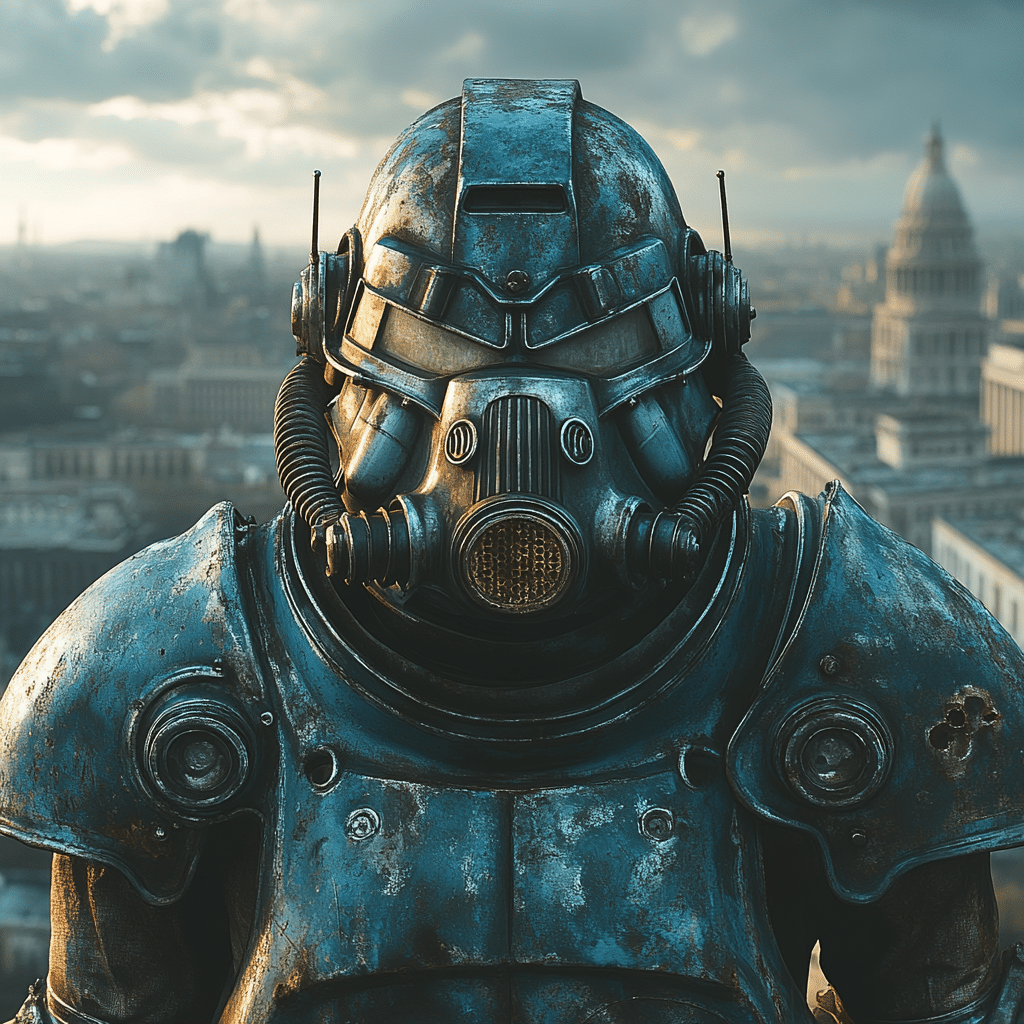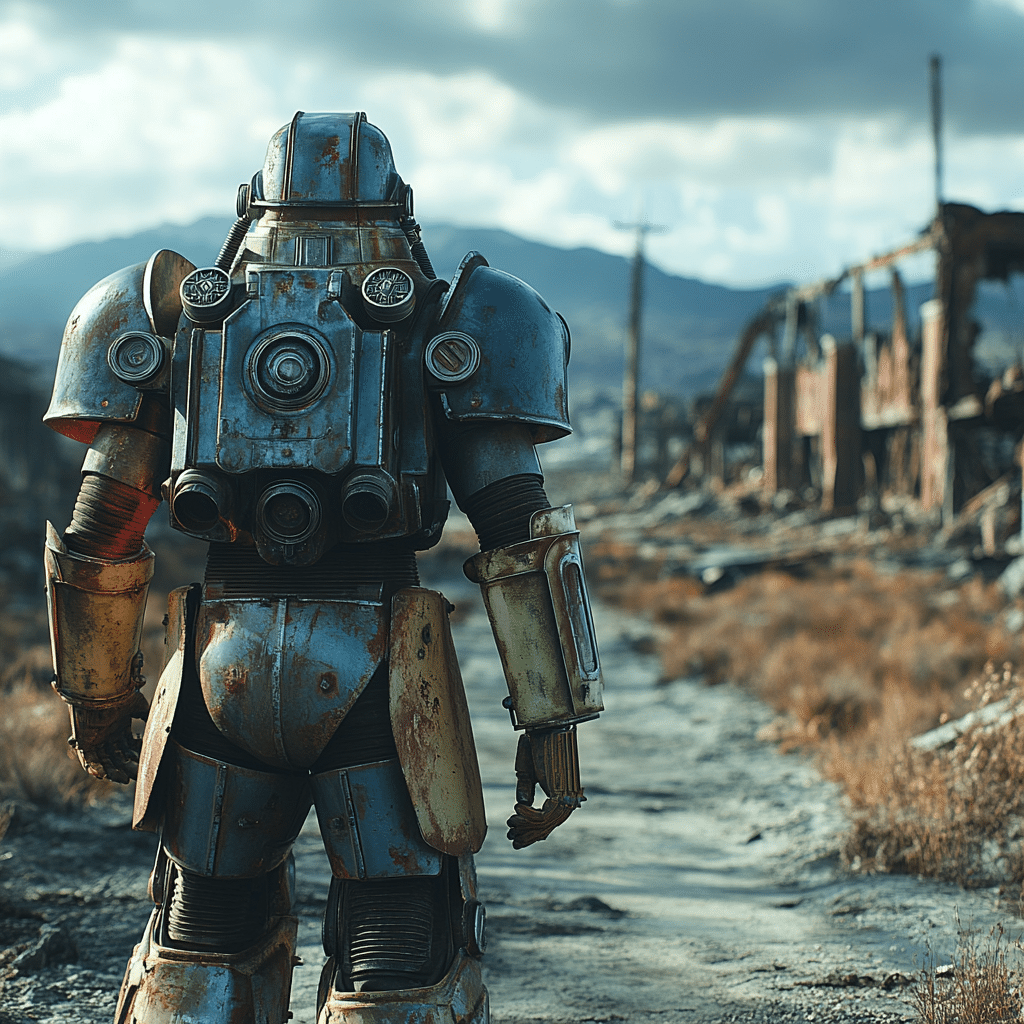As fans of the Fallout franchise eagerly await the next installment, it’s essential to revisit the rich and intricate Fallout timeline that has captivated gamers and storytellers for over two decades. Hey there, fellow wanderers of the Wasteland! The vibrant, post-apocalyptic universe of Fallout, layered with moral dilemmas and social commentary, charts humanity’s resilience amidst the remnants of civilization. Strap on your Power Armor as we explore the key moments in the Fallout timeline, showcasing pivotal events, character arcs, and their broader implications on both gameplay and narrative.

Top 7 Critical Events in the Fallout Timeline
The Fallout timeline is marked by numerous defining events that shape its myriad stories and factions. Here are the top seven critical moments that sealed the fate of humanity and created the universe beloved by fans.

1. The Great War (2077)
First things first, let’s talk about the showdown that kicked it all off: the Great War. On October 23, 2077, the United States and China went nuclear, unleashing destruction on a global scale. This catastrophic event became the ultimate backdrop for the Fallout games, symbolizing the risks of political conflict and unbridled technological advancement. Honestly, it’s a grim reminder of how swiftly things can spiral out of control. Think of it as the ultimate “what if” scenario gone horribly wrong!
2. The Rise of Vault-Tec and the Vaults
Here’s where it gets juicy! Vault-Tec, the corporation behind those infamous underground vaults, may seem like saviors, but let’s not kid ourselves—they also turned into captors. These vaults served as not only shelters but also bizarre experimentation sites. Ever meet the folks from Vault 111? It’s enough to give you ethical whiplash, showcasing themes of human experimentation and survival. Characters encountered in the vaults often grapple with these unsettling themes, offering a more profound commentary on human nature.
3. The Birth of the Brotherhood of Steel
Hold onto your Teslas! Out of the chaos, we see the emergence of the Brotherhood of Steel. Formed from remnants of the U.S. Armed Forces, this faction is dedicated to preserving technology at all costs. Their relentless pursuit of advanced tech reflects ongoing debates about the value of knowledge and power. You might think of them as the tech-obsessed uncles we all have, only they’re armed to the teeth and have a flair for theatrics!
4. The Creation of Super Mutants
Next up is the tale of the Super Mutants, who were born from the infamous Forced Evolutionary Virus (FEV). Their existence begs the question: Just how far is too far when it comes to science? These hulking behemoths add layers to Fallout’s narrative canvas, prompting players to question identity and what it truly means to be human. Exploring their stories can tug at your heartstrings—be prepared for some serious moral dilemmas!
5. The Enclave’s Struggle for Relevance
Swinging back to politics, we meet the Enclave, showcasing the remnants of the U.S. government. Think of them as the Kardashian family of the post-apocalypse—always vying for the spotlight. Their ambition to “restore” America comes with a serious cost, creating a troubling vision of a future built on elitism and societal division. You can’t help but draw parallels to today’s societies—who knew post-apocalyptic fiction could be so relatable?
6. Fallout 3 and the Wasteland’s Morality Play
Let’s rewind to Fallout 3, a game that brought the franchise to a new audience and redefined narrative play. This title introduced nuanced storytelling and showcased the impact of player choices—good luck sleeping after you choose whether to nuke Megaton! Here, morality becomes a game of inches; choices echo throughout the wasteland, forcing you to confront some seriously ambiguous implications about good and evil.
7. New California Republic’s Political Reckoning
Lastly, we can’t forget about the New California Republic (NCR), which highlights the struggle for power in a fractured world. Their quest to maintain democracy in the chaos of the post-apocalypse rings familiar to anyone keeping an eye on today’s global politics. The NCR’s antics often surface questions about governance and societal constructs—it’s a reflective nod to real-world issues, making you ponder just how fragile civilization can be when the chips are down!
Fallout Timeline Vs. Other Post-Apocalyptic Narratives
Examining the Fallout timeline alongside other iconic narratives, like DC’s Zack Snyder’s Justice League, you’ll find intriguing comparisons. After all, both portray fragmented worlds yearning for heroes! The Supergirl cast often emphasizes themes of justice and individuality, creating an interesting backdrop for further comparisons with Fallout.
Examining the Hero’s Journey in Fallout and Beyond
In both Fallout and the Supergirl series, protagonists are forced to navigate moral dilemmas and the consequences of their choices. Unlike the hero formula in Zack Snyder’s Justice League, Fallout presents a world where decisions can lead to dire outcomes. So, are you gonna be the hero or the villain? Good luck figuring that one out!
The Role of Factions in Fallout as Modern Parables
The factions in the Fallout universe act as reflections of society—much like the battling teams in Marvel Strike Force. Both gaming and film narratives utilize these groups to dig into themes of governance and morality when faced with destruction. It’s fascinating how these stories can resonate with contemporary issues, illustrating that life’s dilemmas often play out in the most unexpected places.

The Future of the Fallout Timeline
Looking ahead into 2024 and beyond, the Fallout franchise keeps its grip on popular culture. With a new TV series that takes place several years after Fallout 4, the world expands its lore. It’s intriguing to imagine how the potentials of storytelling will evolve alongside new characters and narratives.
The delicate tension between hope and despair in a world stripped of its former glory resonates strongly with audiences today. The Fallout timeline offers a multiverse through which we can examine societal trends and the resilience of the human spirit. Innovative storytelling may dive deeper than ever, exploring moral landscapes relevant to our modern dilemmas.
In conclusion, the Fallout timeline isn’t just a series of games and stories—it’s a profound narrative woven into the fabric of human existence. As we navigate the complexities of our world, the Fallout franchise remains a mirror reflecting our historical follies and triumphs, ensuring that its legacy endures for generations to come. So grab your Nuka-Cola and settle in; the journey’s far from over!
Fallout Timeline: Delving into the Post-Apocalyptic Future
The Root of the Fallout
The fallout timeline kicks off in the 1940s with the start of the Cold War, intertwining history and pop culture in incredible ways. Did you know that this era sparked the fascination with atomic age designs, influencing everything from fashion to film? Those iconic bomber Jackets, with their rugged style, became symbolic of both military and civilian life during this time. As tensions escalated, many turned to futuristic visions of life post-nuclear fallout, while others tried to figure out how mortgage rates would change in reaction to the evolving economic climate. It’s a wild ride through history!
Wasteland Wonders
Fast forward to the 2070s, the fallout timeline shows a society wrought with peril and survival instincts kicking in. Here, we discover the fascinating touches of creativity in survival gear, showcasing items like the glass blunt, which has become a quirky nod to what people might use in a world stripped of traditional comforts. And guess what? Even pop culture figures like Cj Perry find their way into this universe, proving that fame can stretch across dimensions and timelines. It’s exciting how various elements keep weaving through the nuclear narrative!
Echoes of the Past
By the 2280s in the fallout timeline, society is a mix of high technology and low civilization, reminiscent of rock and roll’s golden age with a hint of post-apocalyptic flair. This shift has seen classic tunes from bands like Grand Funk Railroad play into the backdrop of player experiences, creating an odd sense of nostalgia amidst ruin. It’s not just about survival anymore; it’s also about finding a rhythm in chaos. And when you think about the choices characters make—like the fateful decisions around Barron Trump and his college path—they reflect a larger commentary on authority and legacy shaped by choices gone awry. It’s an enthralling tapestry that keeps players glued to their screens, living out these alternative realities.

What is the timeline order of Fallout games?
The timeline of Fallout games starts with Fallout 76, followed by Fallout 4, then Fallout 3, and finally New Vegas. Fallout 1 and Fallout 2 take place even earlier, making them part of the series’ original lore.
Where does Fallout show fall in the timeline?
The Fallout show is set several years after Fallout 4, roughly between 2287 and 2297, placing it about 9 to 10 years after the events of the fourth game.
Why does Fallout look like the 50s?
Fallout looks like the 50s because it’s designed with a retrofuturistic vibe, capturing what people back then imagined the future would be like if the technology they envisioned became real.
Is Fallout 4 before or after New Vegas?
Fallout 4 takes place a few years after New Vegas and 10 years after Fallout 3, so it comes later in the timeline in terms of events.
Is Fallout 76 before or after 4?
Fallout 76 is actually set before Fallout 4, serving as a prequel that takes place just after the bombs fell in 2102, leading to the events that follow in the timeline.
What is the shortest Fallout game?
The shortest Fallout game is Fallout: Shelter, a mobile game that doesn’t follow the main series structure and offers a different gameplay experience altogether.
How did people live 200 years in Fallout?
People in Fallout survived for 200 years due to being in cryogenic preservation, letting them sleep through the worst of the nuclear fallout while keeping their bodies mostly intact.
What will Fallout 5 be about?
As for Fallout 5, there’s no official announcement yet, but fans are speculating it could explore new regions or continue existing storylines from previous games.
Is Dogmeat in the Fallout show?
Dogmeat does appear in the Fallout show, continuing his role as a beloved companion, much like in the games.
Who is the oldest human in Fallout?
The oldest human in Fallout is actually a character named “The Vault Dweller,” who can be over 200 years old by the time of the later games, thanks to the vault systems and preservation methods.
Why is the tech in Fallout so old?
The tech in Fallout seems old because it’s inspired by 1950s designs, blending classic aesthetics with advanced ideas that were predicted but never realized in real life.
Why was there a nuke in Fallout?
There was a nuke in Fallout because the world had escalated into a nuclear war due to political tensions and resource scarcity, leading to the apocalyptic setting we see.
Are Fallout 3 and 4 connected?
Fallout 3 and 4 are connected in lore, but they take place in different regions with separate stories and character arcs, adding depth to the universe.
What order should I play Fallout in?
There’s no strict order on how to play Fallout since each game has its own storyline, but starting with Fallout 3 or 4 often introduces new players nicely to the series.
Is Fallout 76 a prequel?
Yes, Fallout 76 is a prequel to the main series and is set long before any of the other mainline entries, focusing on the rebuilding of civilization after the war.
Does Fallout have an order?
Fallout does have an order based on timelines, starting from Fallout 76 and leading through the main entries, making it easier to understand the series’ progression.
What timeline is Fallout 4 based on?
Fallout 4 is a sequel to the other mainline games in terms of story development, coming after Fallout 3 and expanding on the lore.
Is Fallout 4 a prequel or sequel?
Fallout 4 is often considered better than Fallout 76 due to its more structured narrative, in-depth character development, and overall gameplay experience, which many fans appreciate.






















